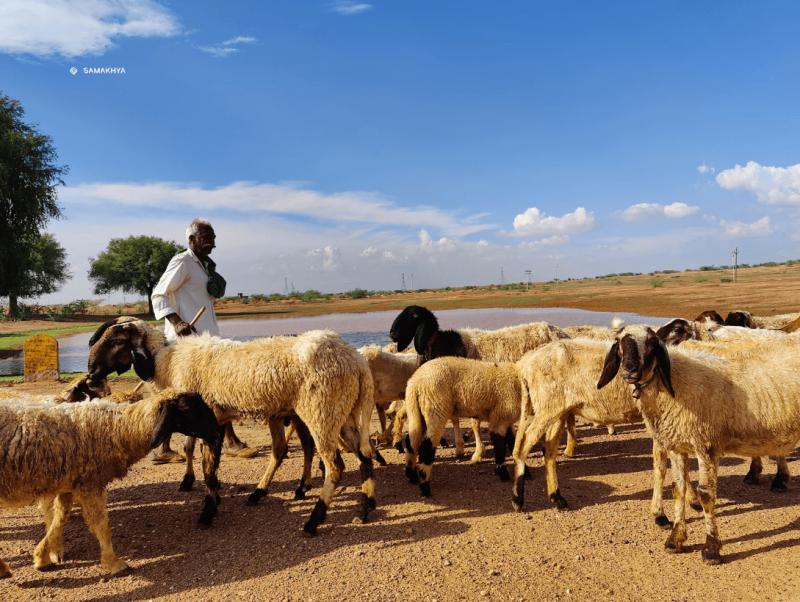The Impact of Circular Economy on Rural Artisans

Latin America is said to use only 10% of waste out of
5,41,000 tons of solid waste produced each day. The European Union creates 2.2
billion tons of waste every year, contributing to extreme pollution. These are
just the numbers of the highest polluting countries in the world. But many
countries are also opening their journals of waste management legislation to
promote a more sustainable model and reduce waste to as much extent as
possible. This is why, they are switching to a new era of production known as
the circular economy.
What Is Circular Economy?
The circular economy
is the concept of keeping products and materials in the process for as long as
possible. As per the usual process, resources are mined to make products and
discard the waste. But circular economy is a drift to this existing model.
According to the Save Our Seas 2.0 Act, circular economy orients to a
system-focused approach involving regenerative and restorative economic
activities and industrial processes. This allows resources to maintain their
highest values in the processes and activities, allowing them to stay in the run
for as long as possible. This promotes waste elimination through superior
business models and industries, along with empowering business generation
amidst local artisans in marginal areas.
Local artisans are now open to more job opportunities as
businesses are introducing more innovations and entrepreneurship options in primitive areas.
Rural artisans will
be in higher demand for skilled works like recycling, regeneration, and
maintenance of products.
Also, circular
economy benefits artisans by generating raw materials in the native land,
reducing the need to import raw materials.
Thus, the concept of circular economy benefits the
economy of businesses, consumers, rural
artisans, and the planet as a whole. One of the prominent businesses
empowering this concept and artisan's
sustainable practices for the past 35+ years is Samakhya. They follow a lucrative business
model, holding the following factors.
Everything About Samakhya’s Circular Economy
Model
Samakhya’s business approach is to empower local craftsmen
and artisans and promote sustainable business practices with the following
prospects.
Material Sourcing
Samakhya’s foremost concern is to use eco-friendly and
sustainable products. Therefore, they use regenerative and recycled materials
like sheep’s pastoral fibres for creating insulators. This is an example of
abundant regenerative materials that can be easily recycled without hampering
the environment.
Production Process
While a large number of industries are relying on machines
for faster production irrespective of waste generation, Samakhya follows the artisans' sustainability process of
hiring local artisans for production. They equip the rural artisans in marginal areas with modern technology and
constant training for increased and eco-friendly production.
Product Lifecycle:
Samakhya’s concept of circular
economy ensures a non-extinctive and abundant production process,
increasing the span of the product’s life. An example is the use of pastoral
fibers for creating insulators. This raw material is scientifically used for
restorative and durable product creation.
This has largely impacted the lives of artisans in primitive
areas; here is how.
Impact Of Samakhya’s Circular Economy On Rural
Artisans
Economic Empowerment:
The rural artisans living in marginal areas always relied on
animal husbandry and agriculture as the only source of livelihood. However,
these occupations face frequent challenges with the changing climatic
conditions. Amidst this, the circular
economy benefits a large sector of people by generating stable income
opportunities within their native areas. Pastoral farming and the creation of
modern insulators from sheep wool remains by Samakhya
is one such example of the same. This occupation guarantees long-term
sustainability and growth in underdeveloped regions.
Skill Development:
The initiatives of artisan
sustainability practices are not just promoting economic growth but also helping
to keep the art of the traditional cultural heritage alive. In addition,
Samakhya is empowering rural artisans with modern technology for mass and
sustainable production. For this, the team provides the necessary
technologically advanced and eco-friendly equipment to promote faster
production.
Community Growth:
The initiative of the
circular economy empowers rural
artisans for sustainable production and economic growth. This initiative is
not just benefiting one but benefiting the community as a whole and inspiring
more businesses to prefer local production over large-scale machine production.
This will promote sustainability and community growth while eliminating waste
production.
A living example is the story of artisans from Thar Desert,
the major insulation-producing region for Samakhya. The rural artisans were
struggling with lower income until Samakhya introduced the concept of pastoral
farming to the local areas. Today, more than 200 artisans are involved in the
local production of insulation gears using pastoral fibers. This initiative
towards the local rural artisans has
improved livelihood while promoting environmental conservation.
Bottom Line
The circular economy model
is changing paths for business from waste production to environmental
conservation. It's high time to participate in the same with consumerism and
support businesses like Samakhya struggling for a better tomorrow.
Together we can save our Mother Earth.
Comments